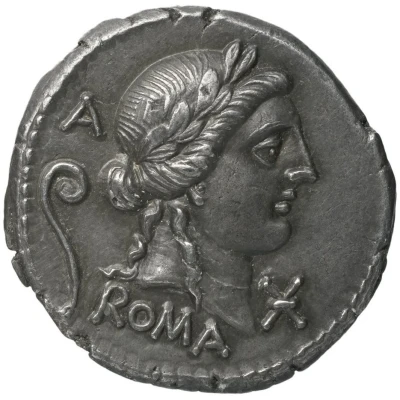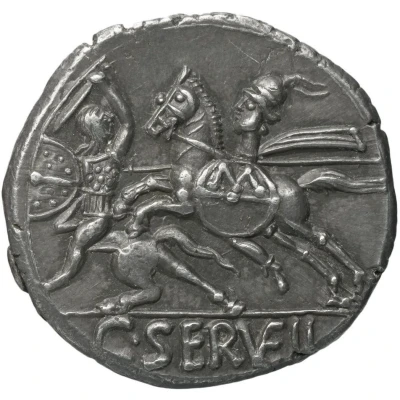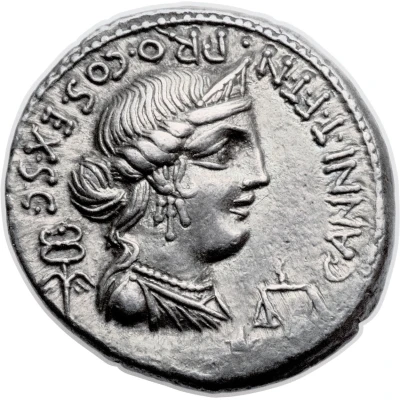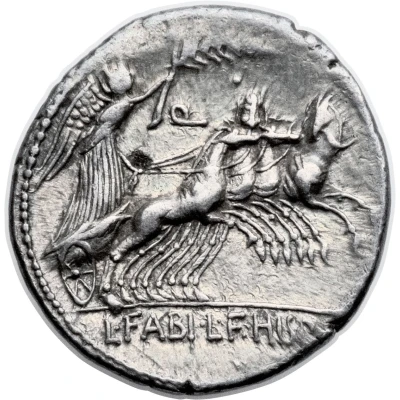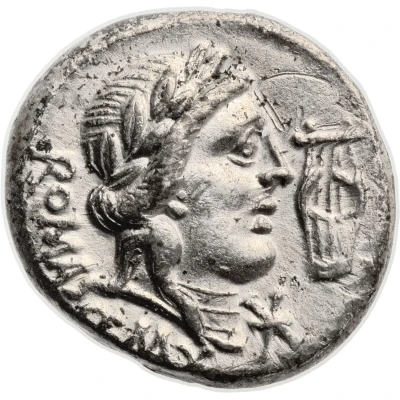
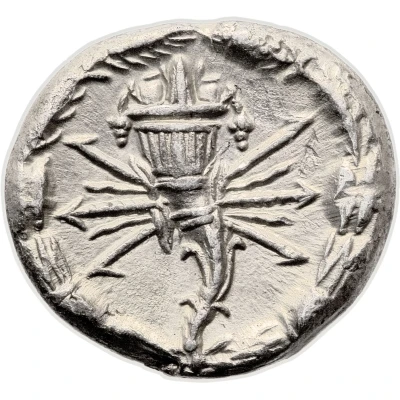

© Heritage Auctions
Denarius Fabia: Quintus Fabius Maximus; ROMA Q•MAX 82 BC - 80 BC
| Silver | 3.73 g | 18 mm |
| Issuer | Rome › Roman Republic (509 BC - 27 BC) |
|---|---|
| Period | Republic (509 BC - 27 BC) |
| Type | Standard circulation coin |
| Years | 82 BC - 80 BC |
| Value | Denarius (1) |
| Currency | Denarius of 16 Asses (141 – 27 BC) |
| Composition | Silver |
| Weight | 3.73 g |
| Diameter | 18 mm |
| Shape | Round (irregular) |
| Technique | Hammered |
| Orientation | Variable alignment ↺ |
| Demonetized | Yes |
| Updated | 2024-10-06 |
| Numista | N#66848 |
|---|---|
| Rarity index | 97% |
Reverse
Cornucopia superimposed on horizontal thunderbolt; around, wreath composed of ear of barley, ear of wheat and assorted fruits.
Anepigraphic.
Comment
Quintus Fabius Maximus was moneyer in 127 BC; this coin is part of the re-issue of this moneyer's coin type under Sulla.The gens Fabia was one of the most ancient patrician families at Rome, playing a prominent part in history soon after the establishment of the Republic. Three brothers are said to have been invested with seven successive consulships, from 485 to 479 BC. The house derived its greatest lustre from the patriotic courage and tragic fate of the 306 Fabii in the Battle of the Cremera in 477 BC. The Fabii were not distinguished as warriors only; several members of the gens were also important in the history of Roman literature and the arts.
Interesting fact
The Denarius coin was minted during the Roman Republic, a time when Rome was still a republic and not yet an empire. The coin features an image of Quintus Fabius Maximus, a prominent Roman politician and military leader, on one side, and the abbreviation "ROMA Q•MAX" on the other. The use of a prominent figure like Fabius Maximus on the coin was a common practice during this time period, as it helped to promote the idea of Roman values and leadership. Additionally, the fact that the coin was made of silver and weighed 3.73 grams suggests that it was a valuable and widely used form of currency during this time.
